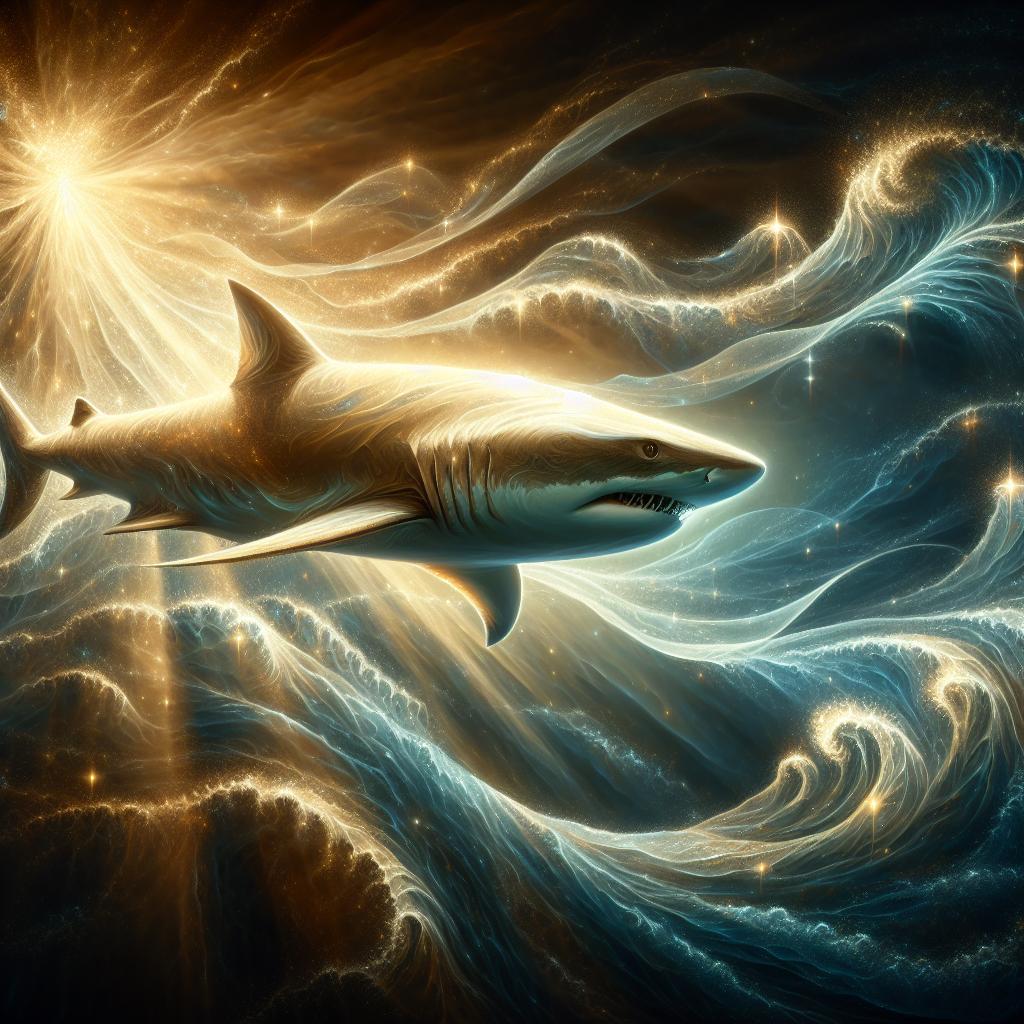
Divine Mysteries Unveiled: Exploring Sharks, Denizens of the Deep
Published: 15 May 2024
Sharks: Denizens of the Deep
Sharks are fascinating creatures that evoke both fear and awe. With their powerful bodies, black eyes, and rows of razor-sharp teeth, they glide through the ocean as fierce marine predators. While the Great White shark often comes to mind when people think of sharks, there are actually about 250 different types of sharks, with only 27 of them implicated in attacks on humans or boats. Interestingly, the largest known sharks today, such as the basking shark and whale shark, are relatively harmless to humans as they primarily feed on plankton and small fish.
Incredible Design Features
Sharks come in a wide variety of shapes and sizes, each with unique design features that suit their diet and environment. For example, sharks like the mako and thresher sharks, which feed near the surface, are streamlined and powerful swimmers that can catch fast tuna and marlin. On the other hand, bottom-feeding species like the whale shark have stout, blunt heads and are more sluggish. Sharks that eat shellfish have coarse, pavement-like crushing teeth.
Sharks belong to a group of fishes called cartilaginous fishes (class Chondrichthyes). Unlike "bony" fishes, they have skeletons made of cartilage instead of bone and tooth-like scales called denticles on their skin. These incredible predators have evolved various mechanisms to locate prey. While their ability to distinguish moving objects visually is understood to some extent, they primarily rely on their highly acute sense of smell to detect food. In fact, they can detect less than one part per million of blood in the water.
Adaptations for Life in Saltwater
Sharks have also been perfectly designed to live in their saltwater environment. Most marine vertebrates maintain lower concentrations of salts and other chemicals in their blood compared to seawater. This creates a continuous problem of water loss to the environment through osmosis. However, sharks, like other cartilaginous fishes, have the ability to reabsorb most of their nitrogenous waste products and store them in their tissues and blood. This process, known as "urea retention," allows the concentration within the shark's body to exceed that of the surrounding seawater, enabling water to move into the body without using energy.
Living Fossils
Sharks are often referred to as "living fossils" because they appear to have changed very little over millions of years. The fossil record suggests that "modern sharks" appeared in the Early Jurassic Period, supposedly around 100 million years ago. Evolution has modified their morphology very little, focusing mainly on improving their feeding and swimming mechanisms. Despite claims about shark evolution, there is no clear understanding of how sharks evolved within their own class or in the broader context of marine evolution.
Enormous sharks once inhabited our oceans, such as the Carcharodon megalodon. Based on the discovery of huge fossil teeth, scientists believe this giant shark could have been up to 17 meters (60 feet) long or even longer. However, the fossil record does not provide evidence that these creatures were anything other than sharks. The similarities between megalodon teeth and those of the Great White shark may be more superficial than previously thought, and the two species may have differed considerably in their attack behavior.
Why This Matters
Understanding the incredible design features and unique adaptations of sharks highlights the complexity and diversity of life on Earth. It also raises questions about how such intricate systems could have evolved through natural processes alone. The existence of living fossils like sharks challenges the idea that all organisms have undergone significant transformation over millions of years. Exploring these topics can deepen our appreciation for God's creation and inspire awe and wonder.
Think About It
- How do you think sharks' design features reflect their specific roles in the marine ecosystem?
- Consider the concept of living fossils. What implications does this have for our understanding of the age and development of life on Earth?
- Reflect on the complex mechanisms that sharks possess to thrive in their saltwater environment. How does this showcase the intricacy of God's design?
- How does the existence of megalodon challenge conventional theories of evolution? What alternative explanations might there be for the similarities between megalodon and Great White shark teeth?
Overall, sharks are captivating creatures that demonstrate intricate design features and adaptations. Exploring their unique characteristics can deepen our understanding of God's creation and encourage us to further contemplate the wonders of the natural world.
